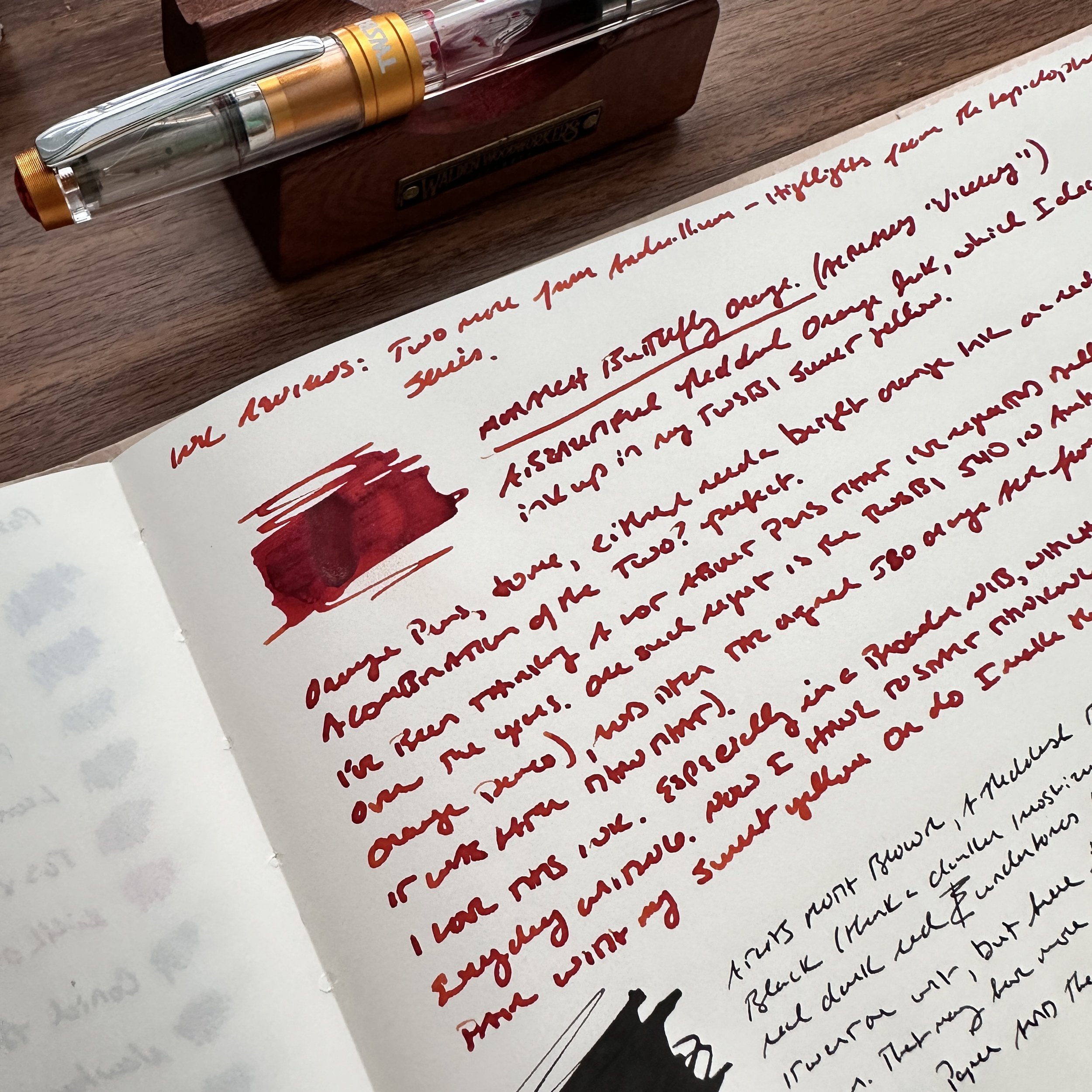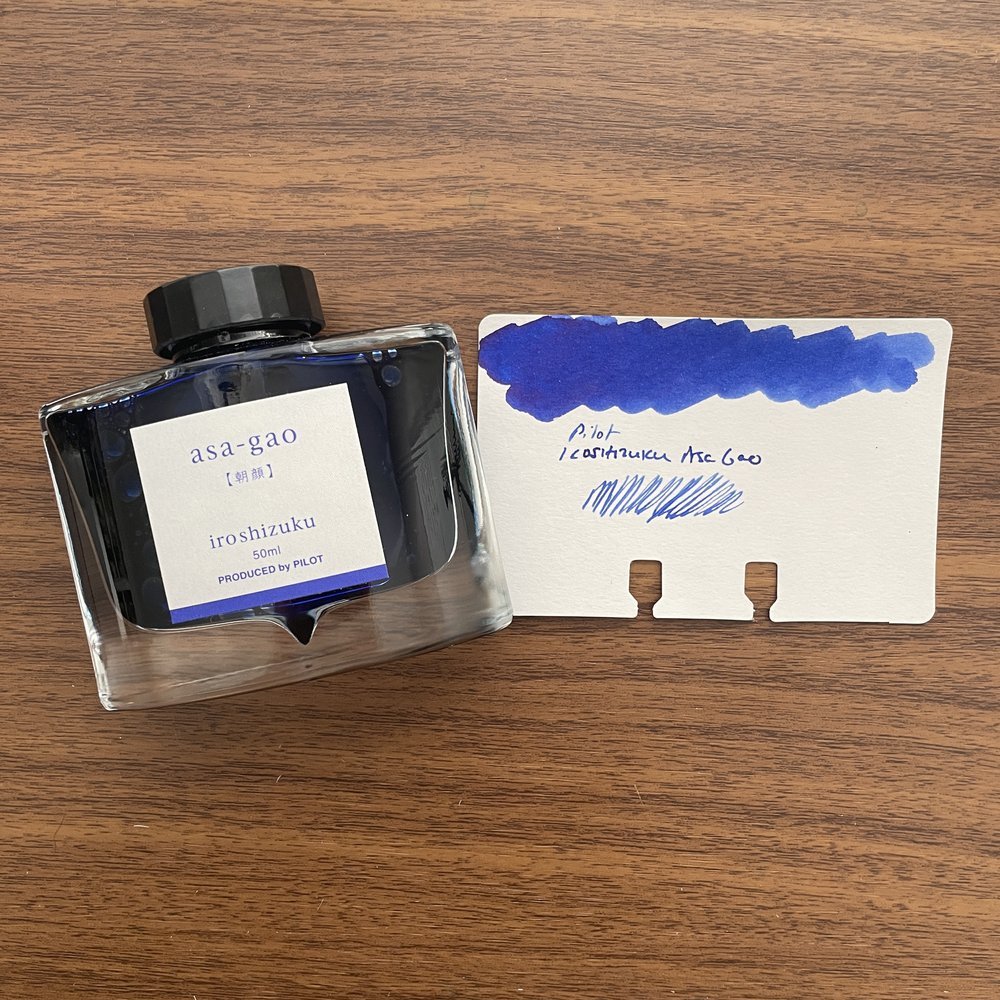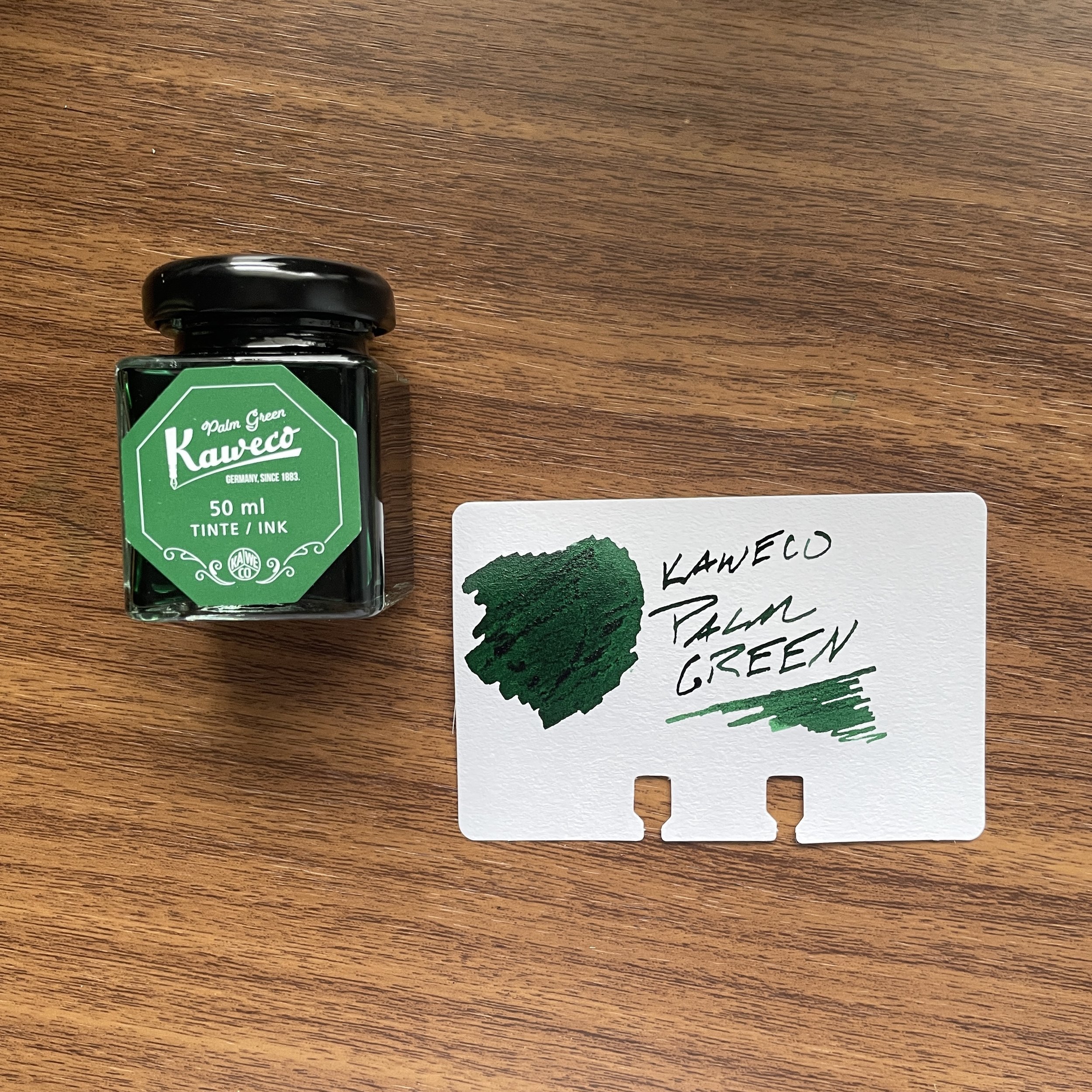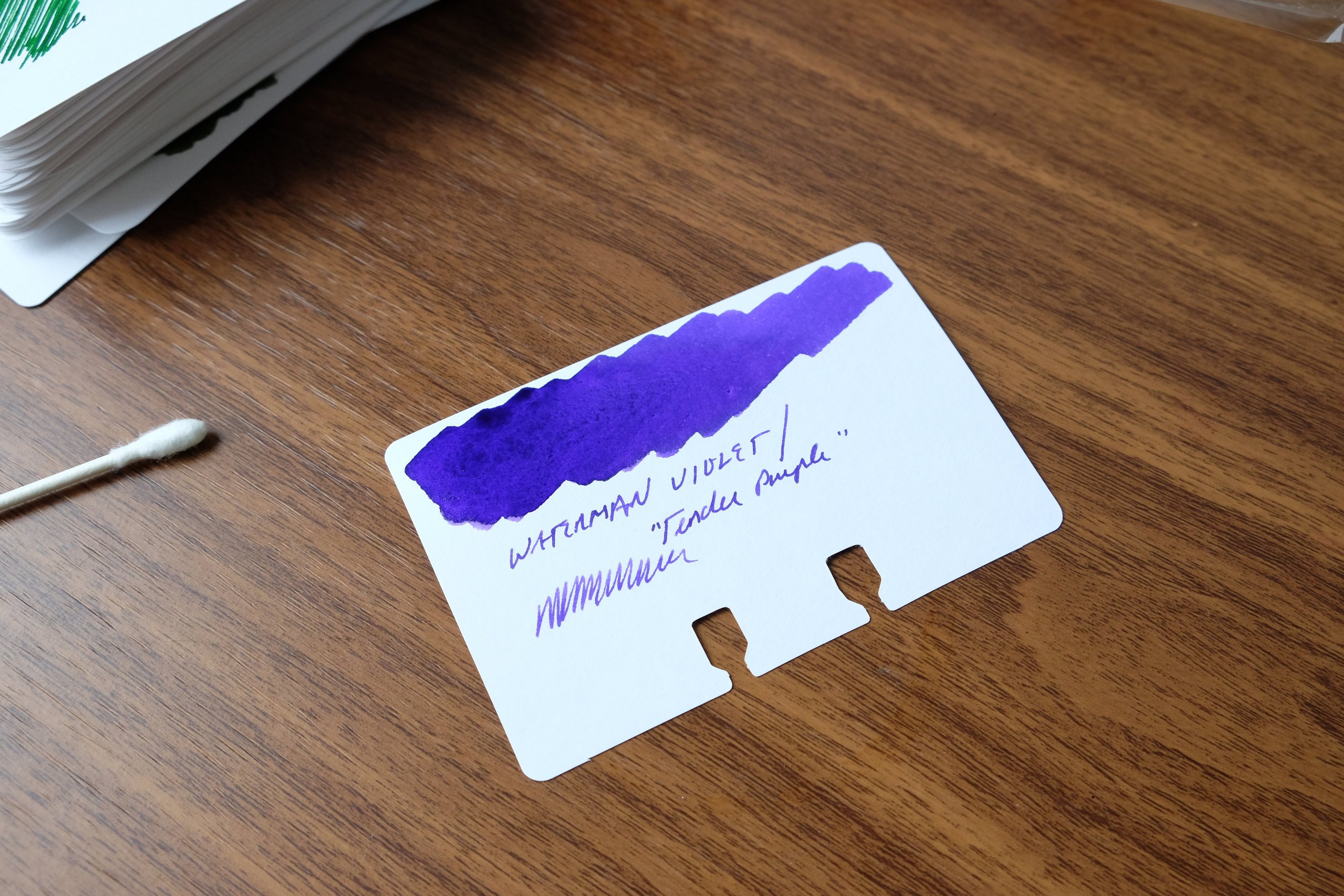2023 marks the first year that I’ve acquired a Diamine Inkvent Calendar and had my stuff together far enough in advance to play along here on the blog. This “project” is pure fun for me and a bit out of my comfort zone for the blog, not being known for ink reviews and also as someone who’s admittedly a bit “boring” in terms of the inks they use on a daily basis. So how’s it going? So far, so good, and as expected about 1/3 of the inks have turned out to be colors that I would use semi-regularly.
Note: In order to allow myself adequate time to photograph and video each ink, I’m currently working about five days ahead. So even though we’re technically only on “Day Two” of Inkvent, I’ve already opened and swatched through Day 5.
How Does the Diamine Inkvent Calendar Work?
Like a typical Advent calendar. You receive a box that has 25 numbered “doors” punched into it. If you use the calendar as intended, you open one door for each day of Advent. The calendar contains 25 bottles of different inks behind each door: 24 15ml bottles and one 30ml bottle, with the latter intended to be a “special” ink opened on Christmas Day. Diamine claims these inks are all unique for each year’s Inkvent, and they have started releasing the inks in full bottles about six months later.
What Inks Are In and Inkvent Calendar?
Diamine includes 25 different ink samples featuring “Holiday-themed” inks from across their various lines, including standard ink, Shimmer Inks, and even “Chameleon” inks (shimmer inks that change color depending on the light). This week, Door No. 1 included “Fortune’s Gold,” a gold ink with gold shimmer that leans yellow-green in different light. Door No. 2 contained “Cashmere Rose”, a dusty pink that’s more my style, and will probably end up inked soon as I have several pens getting ready to run dry and will need a refill.
This year, I plan to use a large Col-o-Ring Folio pad to swatch all 25 inks side by side. Many thanks to my friend Ana over at the Well-Appointed Desk for supplying the large Col-o-Ring!
What Are You Going to Do with All That Ink?
Probably keep the ones I like and give away the ones I won’t use, including most of the Shimmer and Chameleon series. It’s not that I don’t enjoy playing around with these inks - I might use them to jot quick holiday messages to friends and family - but afterwards will probably pass them along since inks containing shimmer or heavy sheen don’t receive much long-term use from me.
How to Follow Along with Inkvent 2023
I won’t be posting regular Inkvent updates here on the blog - there’s simply too much ink to do individual reviews, though I might do a general overview at month’s end. I will, however, be doing daily - or as close to daily as I can manage - posts over on Instagram and YouTube, as well as posting more detailed thoughts on the inks on the Patreon Channel. If you’d like to follow along in person with your own Inkvent Calendar, we still have a few available in the shop. Enjoy the holiday season!
The Gentleman Stationer is supported entirely by purchases from the T.G.S. Curated Shop and pledges via the T.G.S. Patreon Program. If you’re looking for gift ideas, check out our 2023 Holiday Gift Guide!





